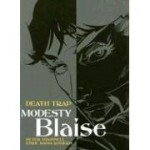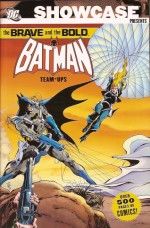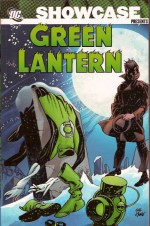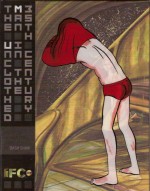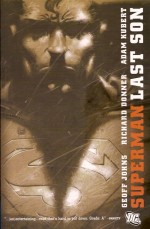
By Peter O’Donnell, Enric Badia Romero & John Burns (Titan Books)
ISBN: 978-1-84576-419-7
Originally a newspaper strip created by Peter O’Donnell and drawn by the brilliant Jim Holdaway, Modesty and her charismatic partner in crime (and latterly crime-busting) Willie Garvin have also starred in 13 prose novels and short story collections, two films, one TV pilot, a radio play and nearly one hundred comic strip adventures between 1963 and the strip’s conclusion in 2002. She has been syndicated world-wide, and Holdaway’s version has been cited as an artistic influence by many major comic artists.
Titan Books’ marvelous series re-presenting the classic British newspaper strip reaches a period of artistic instability with this thirteenth volume as Spanish collaborator Romero left in 1978 to concentrate on his own creation Axa; although if anything the strip actually improved under the all-too-brief tenure of his replacement.
John M. Burns had worked on Junior Express and School Friend but truly began his auspicious rise as part of the inimitable and beloved team of artists who worked on the Gerry Anderson licensed titles TV Century 21 and its sister magazines (he is particularly admired for Space Family Robinson in Lady Penelope). He drew strips for The Daily Sketch, Daily Mirror and Sun with long, acclaimed runs on The Seekers and the saucy “Good Girl†strip Danielle (expect a review of her really soon), before briefly – and controversially – taking over Modesty Blaise.
Since then he has worked on TV-based series for Look-In and Countdown before latterly abandoning pen and ink for painted art and finding a welcome home in the legendary British science fiction comic 2000AD, where he has – and continues to – work on Judge Dredd, Nikolai Dante and his own Bendatti Vendetta. He is also a regular adaptor of significant literary masterpieces, having already completed pictorial versions of Lorna Doone, Wuthering Heights and Jane Eyre.
Although Burns only drew 272 consecutive daily strips, his influence on Modesty was marked and long-lasting. His deft ability with nib and brush are highlighted here with a complimentary feature reprinting 12 of his illustrations from some of those prose novels O’Donnell wrote starring his inimitable creation, and there are also sketches and cover reproductions from Titan Books’ 1980s Modesty collections.
The adventure portion of this book begins with ‘Idaho George’ an extremely engaging comedy thriller which sees Garvin and “the Princess†rescue an old acquaintance. The eponymous George is a marriage-dodging conman who accidentally fools the wrong mark: superstitious and extremely dangerous Anastasia Bone sets her gang of murderous crime specialists on the hapless trickster when he masquerades as a swami who can materialise gold from thin air…
Fast-paced and tremendously satisfying, that caper is just a taster for Romero’s last job ‘The Golden Frog’, a globe-girdling vendetta that brings Modesty back to her roots when Saragam – the martial arts master who taught her to fight – is captured by a revenge-crazed Khmer Rouge warlord with a grudge against her that stretches back to her days as leader of the criminal organisation The Network. Lured back to the “Killing Fields†of Cambodia and unsure who to trust, Modesty and Willie face possibly their greatest threat in this action-packed, fists of fury fight-fest.
John Burns seemed an ideal replacement for Romero, and is still remembered with affection and appreciation by fans, but he only illustrated two-and-a-half stories, beginning with ‘Yellowstone Booty’ which ran from November 1st 1978 to March 30th 1979 (if you’re curious Idaho George and The Golden Frog appeared in the Evening Standard from 23rd January to October 31st 1978).
His innate design sense, sleek, deceptive line and facility with the female form coincided with a much freer use of casual nudity in the feature, and the action scenes were to become graphic poetry in motion. All these advantages can be observed in this clever yarn of gangsters and lost treasure that sees a young couple save Willie from an ingenious murder-plot, incurring a debt that Modesty moves Heaven and Earth to repay…
These timeless tales of crime and punishments are more enthralling now than ever, and provide much-needed relief in a world increasingly bleak and confusing. At least here you always know who to cheer for and who to boo at. More than three decades later it’s quite odd to realise just mere months after the heroine shockingly – and controversially – bared her breasts, naked ladies adorned not just the comics pages but the “news†portions of so many British papers – all without the kingdom falling into flaming anarchy.
Odder still is the realization that heavy-handed censorship still occurs in America and other countries: boobies and botties – no matter how well-drawn – are still racy, shocking and a big deal opposed with all the vehemence one expects from populations when their Governments suspend Habeas Corpus and/or outlaw football.
I trust this will be all the warning you need, should you be of a sensitive disposition, but hope that such sights won’t discourage you from reading these incredible tales of fiction’s greatest adventuress.
© 2008 Associated Newspapers/Solo Syndication.



